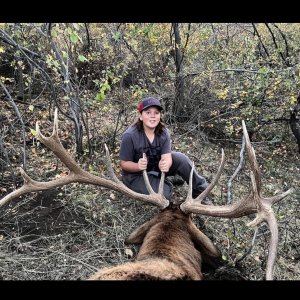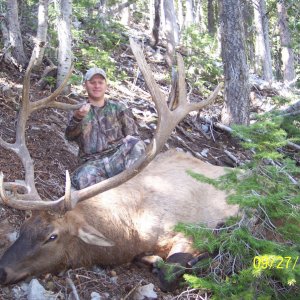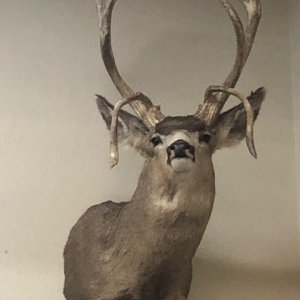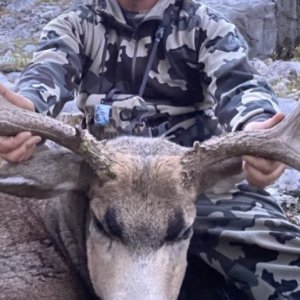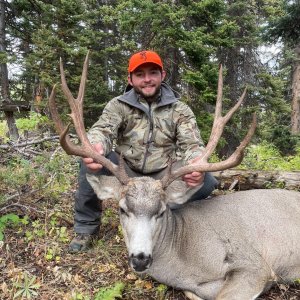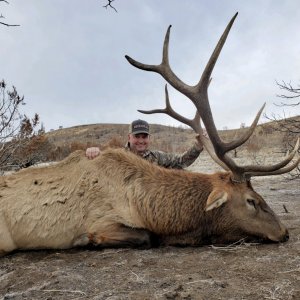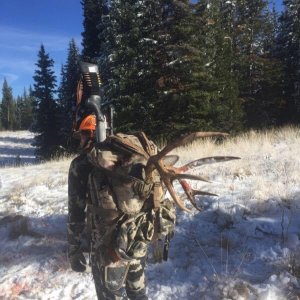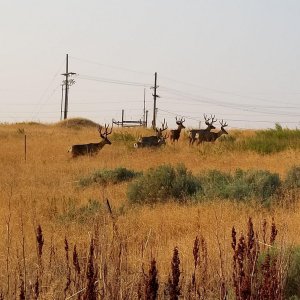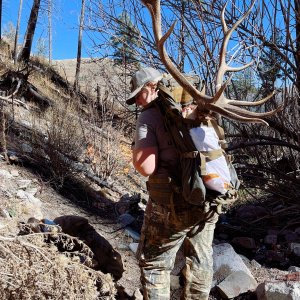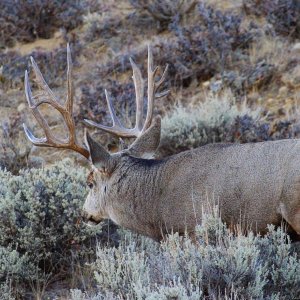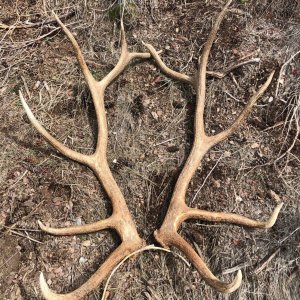Too late he's reached celebrity status.......
GRANTS PASS, Ore. (AP) ? A young wolf from Oregon has become a media celebrity while looking for love, tracing a zigzag path that has carried him hundreds of miles nearly to California, while his alpha male sire and a sibling that stayed home near the Idaho border are under a death warrant for killing cattle.
Backcountry lodge owner Liz Parrish thinks she locked eyes with the wolf called OR-7 on the edge of the meadow in front of her Crystalwood Lodge, on the western shore of Upper Klamath Lake, and hopes someday she will hear his howls coming out of the tall timber.
"I was stunned ? it was such a huge animal," said Parrish, who has seen her share of wolves while racing dog sleds in Alaska and Minnesota. "He just stopped and stared. I stopped and stared. We had a stare-down that seemed like a long time, but was probably just a few seconds.
"He just evaporated into the trees. I stayed there awhile, hoping he might come back. He didn't."
Cattle rancher Nathan Jackson has not seen or heard the wolf, and hopes he never does.
"In this country, we worked really hard to exterminate wolves 50 years ago or so, and there was a reason," said Jackson, who ranches on the other side of Upper Klamath Lake from Parrish's lodge.
"A lot of people who don't have a direct tie to the agricultural community tend to view wolves as majestic, beautiful creatures. They don't seem so majestic and beautiful when they are ripping apart calves and colts."
Last February, OR-7 was in a snowy canyon in northeastern Oregon, when a state biologist shot him with a tranquilizer dart from a helicopter, then fitted him with a tracking collar and blue ear tags. State biologists have been able to chart his journey from GPS positions transmitted from the collar. They show he has traveled 730 miles on his meandering route, getting as far as 320 miles from home. And each time he crosses a county line, OR-7 makes it into the newspapers and on TV news
The conservation group Oregon Wild has begun a contest to give OR-7 a different name, hoping to make him too famous to be shot, either by a poacher, rancher or government hunter. One entry came from as far away as Finland. The first came from a little girl in OR-7's home territory of Wallowa County, who suggested "Whoseafraida."
OR-7 set out on his trek on Sept. 10, just before state wildlife officials issued a death warrant for members of his Imnaha pack for killing cattle. The kill order specifically mentions OR-7's father, the alpha male, and one younger wolf with no collar. Since OR-7 and two siblings took off, that would leave his mother and one pup.
The department reports a government hunter had a shot but missed, and did not get another before conservation groups won a stay of the kill order while their legal challenge is settled by the Oregon Court of Appeals.
Wolves started moving into Oregon from Idaho in the late 1990s, from packs introduced into the Northern Rockies as part of a federal endangered species restoration program. From trail cameras, radio tracking collar data, and sightings, Oregon Department of Fish and Wildlife figures the state has at least 23 wolves. All four packs are in the northeastern corner of the state. Two produced pups this year.
Federal protection for wolves was lifted in Eastern Oregon, but they remain under state protection. West of Interstate 97 they are back under federal protection.
When wolves reach about 2 years old, they typically strike out on their own, looking for a mate and an empty territory they can call their own. And that's what OR-7 has done.
He's trekked across mountains, deserts and major highways from his pack's turf.
Once in the Cascade Range, OR-7 meandered through the Rogue-Umpqua Divide, where Oregon's last known wolf was shot by a bounty hunter in 1946. He skirted Crater Lake National Park, and dropped down to the flatlands near Upper Klamath Lake, climbed back up in the Cascades, and crossed over the crest south of Mount McLaughlin, a snow-capped volcano visible from Interstate 5.
So far there have been no reports of cattle killing along his path.
Russ Morgan, the wolf coordinator for the Oregon Department of Fish and Wildlife, has been surprised by the way the public has embraced the wandering wolf. Much of Morgan's time is spent on a more difficult task, trying to build acceptance among ranchers.
"With all that's going on right now with management of wolves in Oregon, this is kind of a different side that people across the state have taken a shine to," Morgan said.
OR-7's travels are not unusual, said Ed Bangs, the retired U.S. Fish and Wildlife Service wolf coordinator for the Northern Rockies. A female from Montana headed south through Wyoming, crossed southeastern Idaho, dropped down to Utah, crossed northern Colorado, and headed back up to Wyoming, where she ate poison and died.
"If you connect all the dots, she walked something like 3,000 miles," said Bangs. "Wolves are amazing travelers.'"
And patient. One male hung out four years in Idaho, howling and leaving scent markers, before a female found him, Bangs said. They established a pack, and the male lived to the near-record age of 13 before lying down and dying next to a dead elk.
Bangs said most of the wanderers become biological dead ends, but even if OR-7 dies alone, the trail of scent posts he has left will be followed by others.
And OR-7 already may have company. Tracks and sightings from last winter indicated other wolves made it to the Cascades. Parrish spotted a track last May in a muddy area of her meadow

